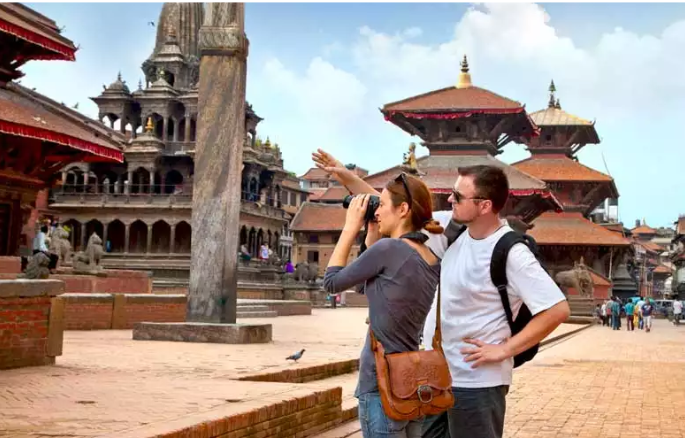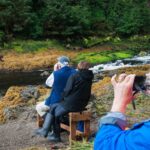Nepal, Tibet, and Bhutan form one of the most exciting travel circuits in the world, offering unique cultural experiences, stunning landscapes, and spiritual journeys. Whether you’re an adventure enthusiast trekking in the Himalayas or a history and culture aficionado visiting sacred temples and monasteries, these three countries offer something for everyone. However, when planning your Nepal Tibet Bhutan Tour Package it’s crucial to consider the best time to visit, as the weather can greatly influence your experience. In this guide, we’ll cover the best time to visit each of these countries, along with essential travel tips and a packing guide to ensure you’re fully prepared for your Himalayan adventure.
Best Time to Visit Nepal: Spring and Autumn
Nepal offers a diverse climate depending on where you’re traveling, but the ideal time to visit is during the spring (March to May) and autumn (September to November). These seasons are considered perfect for trekking and sightseeing as the weather is moderate and the skies are generally clear.
Spring is particularly appealing for trekking in the Everest and Annapurna regions, as the temperature is pleasant, and wildflowers are in full bloom, adding color to the already breathtaking scenery. Similarly, autumn offers clear skies and a pleasant temperature for trekkers. The Nepal Tibet Bhutan Tours during these seasons also allow travelers to explore Kathmandu’s UNESCO World Heritage Sites with minimal rainfall and cooler weather.
However, the summer months (June to August) can be quite challenging for trekking due to the monsoon rains, which make trails slippery and dangerous. Similarly, the winter months (December to February) can be harsh, especially at high altitudes, as snow and freezing temperatures can disrupt trekking routes.
Best Time to Visit Tibet: Spring and Autumn
Tibet’s high-altitude terrain means that the best time to visit is during the spring (April to June) and autumn (September to October). During these seasons, the weather is relatively mild, and the chances of clear skies and pleasant temperatures are higher.
Tibet’s landscape is harsh, but its spiritual and historical significance draws travelers year-round. However, summer (July and August) can be quite crowded and rainy in Tibet. Additionally, temperatures can drop significantly in winter (November to March), making travel less comfortable and posing challenges due to snow-blocked roads and freezing conditions.
Spring and autumn are ideal for exploring Tibet’s sacred sites, such as the Potala Palace, Jokhang Temple, and Mount Kailash. These seasons also provide the best trekking conditions, particularly in the Everest Base Camp region, where trekkers can enjoy magnificent views of the world’s highest peak without the biting cold or extreme heat.
Best Time to Visit Bhutan: Spring and Autumn
Bhutan is often known as the “Land of the Thunder Dragon,” and for good reason. The country’s climate varies depending on elevation, but the best time to visit Bhutan is during the spring (March to May) and autumn (September to November). The weather is mild, and you can enjoy the stunning beauty of the Himalayan landscape without facing harsh conditions.
During spring, Bhutan’s valleys bloom with colorful flowers, and the weather remains pleasant, making it a great time for trekking, sightseeing, and outdoor exploration. Autumn, particularly from September to November, is considered the best time to experience Bhutanese festivals like the Paro Tsechu. The clear skies and crisp air make for perfect travel conditions, and you can visit some of Bhutan’s most iconic monasteries, including the famous Tiger’s Nest Monastery.
Winter in Bhutan (December to February) can be cold, especially in the higher elevations, but it’s still a great time to explore the cultural side of the country. The summer months (June to August) are marked by the monsoon season, which brings heavy rainfall, making outdoor activities less enjoyable and difficult for trekkers.
The Ideal Season for Nepal Tibet Bhutan Tours
When combining Nepal, Tibet, and Bhutan into one Nepal Tibet Bhutan Tour Package, the ideal travel window is from late spring to early autumn (April to October). This period provides the best chance to experience all three countries without the hindrance of extreme weather conditions.
The season from September to November is particularly attractive for travelers looking to experience clear skies, pleasant weather, and the vibrant cultural festivals in these countries. Whether you’re visiting the temples in Kathmandu, trekking in the Tibetan Plateau, or exploring the majestic monasteries of Bhutan, the weather during this time is perfect for outdoor activities and cultural exploration.
In contrast, traveling during the winter months (December to February) is not ideal due to the extreme cold in the higher regions of Nepal and Tibet, and the risk of snowstorms affecting access to popular trekking routes.
Travel Tips for Nepal Tibet Bhutan Tours
When embarking on a Nepal Tibet Bhutan Tour, it’s essential to be prepared for the diverse climates, especially since you’ll be crossing multiple regions with varying weather conditions. Here are some travel tips to help you make the most of your trip:
- Plan Your Permits: Each of these countries requires specific permits for trekking and traveling in restricted areas. Ensure you acquire the necessary permits for Nepal’s trekking regions, Tibet’s border areas, and Bhutan’s special cultural zones.
- Altitude Sickness: Trekking in the Himalayas can expose you to high altitudes, especially in Tibet and Nepal. Acclimatization is key to avoiding altitude sickness. Plan for extra rest days to adjust to the altitude, especially in regions like Everest Base Camp or the Tibetan Plateau.
- Local Currency: While major tourist destinations accept international credit cards, carrying some local currency is essential for remote areas. In Nepal, the Nepalese rupee is used, while Bhutan uses the ngultrum. In Tibet, the Chinese yuan is the local currency.
- Language: While English is widely spoken in tourist areas, learning a few basic phrases in Nepali, Tibetan, or Dzongkha (the language of Bhutan) will help in interactions with locals, especially in rural areas.
What to Pack for Nepal Tibet Bhutan Tours
Packing for a Nepal Tibet Bhutan Tour Package requires careful consideration of the varying weather conditions and activities you’ll be engaging in. Here’s a comprehensive packing guide to help you get started:
- Clothing: Layering is essential for traveling through these regions. Pack light, moisture-wicking clothes for trekking, a warm jacket, and thermal layers for cold weather at high altitudes. Also, include waterproof clothing for rainy days, especially if traveling during the monsoon season.
- Trekking Gear: A sturdy pair of trekking boots, walking poles, and a well-fitted backpack are a must for your Himalayan adventures. Don’t forget a good pair of sunglasses with UV protection, sunscreen, and a hat to protect against the high-altitude sun.
- Personal Care: Include a personal first-aid kit, hand sanitizer, and toiletries. A good quality camera will help you capture the stunning landscapes and cultural treasures you’ll encounter.
- Documents: Ensure you have your passport, visas, trekking permits, and other required documentation. It’s recommended to keep both digital and physical copies of your documents.
Travel Insurance and Health Considerations
When planning your Nepal Tibet Bhutan Tour, it’s highly recommended to invest in comprehensive travel insurance that covers trekking, medical emergencies, and trip cancellations. Since you’ll be traveling in remote areas, it’s important to ensure your insurance covers evacuation services, especially in case of altitude sickness or other health issues.
Before traveling, it’s also a good idea to check with a healthcare professional to ensure you are up-to-date on vaccinations, such as typhoid, hepatitis A, and B. Malaria prevention may also be recommended if you plan to visit the lowland areas of Nepal.
Conclusion
The best time to visit Nepal, Tibet, and Bhutan is from spring to autumn, offering favorable weather conditions for trekking, cultural exploration, and sightseeing. Whether you’re planning to trek in Nepal, explore Tibet’s sacred monasteries, or visit Bhutan’s majestic temples, each country offers unique experiences and breathtaking landscapes. With the right preparation, your Nepal Tibet Bhutan Tours will be a journey of a lifetime. Make sure to pack wisely, plan ahead, and take the necessary precautions to ensure a safe and enjoyable experience in the Himalayas. Your adventure awaits!










